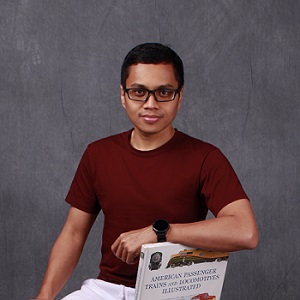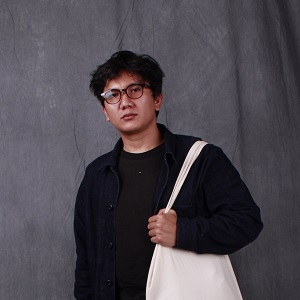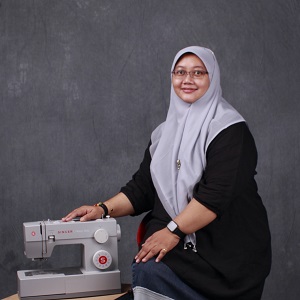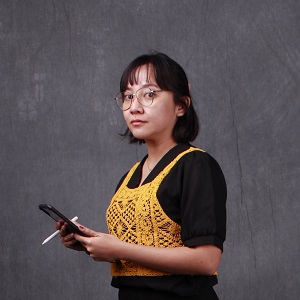About the Journal
About The Journal
Meraki: Journal of Creative Industries is a journal managed by the Faculty of Creative Industries at the University of Surabaya. It serves as a public platform for publishing works across various fields, including product design, fashion design, visual communication design, interior design, advertising, architecture, fine arts, performing arts, crafts, film, photography, culinary arts, printing and publishing, software development, interactive games, and television and radio. This scope is based on the categorization by the Ministry of Trade of the Republic of Indonesia. It broadly encompasses industries that arise from the use of creativity, skills, and individual talents. The Meraki Journal of Creative Industries welcomes articles from academics and experts in these areas, aiming to increase collaboration and innovation. The journal is published biannually, in November and June.
Aims and Scope
Meraki: Journal of Creative Industries aims to be a leading platform for academic and professional discourse within the creative industries. It seeks to promote the development and exchange of innovative ideas, research, and practical applications across various creative disciplines. The journal provides an inclusive platform for experts, practitioners, and academics to share their work and insights into the evolving landscape of creative industries. The scope of the journal covers a wide range of fields that highlight the intersection of creativity, technology, and innovation in industry practices. This includes, but is not limited to:
- Product Design: Exploring innovative design processes, product development, and sustainability practices.
- Fashion Design: Fashion design process, investigating trends, sustainable fashion, design techniques, and the impact of cultural contexts on fashion.
- Visual Communication Design: Discussing graphic design, branding, typography, and visual storytelling.
- Interior Design: Researching spatial design, user experience, sustainable practices, and design innovation.
- Architecture: Examining architectural design, urban planning, and the integration of technology in architecture.
- Advertising: Analyzing creative strategies, digital advertising, consumer behavior, and media effectiveness.
- Fine Arts: Fostering discussions on visual art, interdisciplinary art practices, and the role of fine arts in society.
- Performing Arts: Exploring performance theory, practices, and creative expression in theater, dance, and music.
- Crafts: Investigating traditional and modern crafting techniques, craftsmanship, and cultural heritage.
- Film: Analyzing film theory, production, direction, and the relationship between film and society.
- Photography: Focusing on photographic techniques, visual representation, and the role of photography in visual culture.
- Culinary Arts: Studying food design, presentation, sustainability in food systems, and the culinary arts as cultural expression.
- Music: Exploring music theory, music technology, sound design, and the integration of music into various creative practices.
- Print and Publishing: Discussing the evolution of print media, publishing innovation, and the intersection of digital and traditional publishing.
- Software Development: Focusing on creative coding, interactive design, and software tools for creative industries.
- Interactive Games: Exploring the design, development, and cultural impact of interactive gaming experiences.
- Television and Radio: Analyzing broadcast media, content creation, and the role of television and radio in cultural communication.
Meraki welcomes high-quality, original contributions from academics, professionals, and practitioners within these fields, aiming to advance the creative industries with cutting-edge research, theories, and practices. The journal invites articles that are interdisciplinary and innovative, shedding light on the intersection of creativity, technology, culture, and industry.
Editorial Team
EDITOR IN CHIEF

Dr. Guguh Sujatmiko
Universitas Surabaya, Indonesia
Scopus | Sinta | Google Scholar | Orchid
ASSOCIATE EDITOR

Hairunnas., M.MT.
Universitas Surabaya, Indonesia
Scopus | Sinta | Google Scholar | Orchid
ASSOCIATE EDITOR

Siti Zahro, Ph.D.
Universitas Surabaya, Indonesia
Scopus | Sinta | Google Scholar | Orchid
ASSOCIATE EDITOR

Christabel Annora Paramita Parung, M.Sc.
Universitas Surabaya, Indonesia
Scopus | Sinta | Google Scholar | Orchid
EDITORIAL BOARD
Achmad Syarief, S.Sn., M.S.D., Ph.D.
Institut Teknologi Bandung, Indonesia
Scopus | Sinta | Google Scholar | Orchid
Ellya Zulaikha, S.T., M.Sn., Ph.D.
Institut Teknologi Sepuluh Nopember Surabaya, Indonesia
Scopus | Sinta | Google Scholar | Orchid
Dr. Zulaicha Parastuty
Universität Klagenfurt, Austria
Scopus | Sinta | Google Scholar | Orchid
Dr. Nanang Krisdinanto, M.Si.
Universitas Katolik Widya Mandala Surabaya, Indonesia
Scopus | Sinta | Google Scholar | Orchid
Dr. M. Junaidi Hidayat, S,T., M.Ds.
Institut Teknologi Adhi Tama Surabaya, Indonesia
Scopus | Sinta | Google Scholar | Orchid
Sekar Adita, S.Sn., M.Sn.
Institut Seni Indonesia Yogyakarta, Indonesia
Scopus | Sinta | Google Scholar | Orchid
Dr. Genoveva Noirury Nostalgia
Institut Kesenian Jakarta, Indonesia
Scopus | Sinta | Google Scholar | Orchid
Andi Farid Hidayanto, S.T., M.Sn.
Politeknik Negeri Samarinda, Kalimatan Selatan, Indonesia
Scopus | Sinta | Google Scholar | Orchid
Reviewer
Prof. Ir. Markus Hartono, Ph.D., IPU. | Scopus | Google Scholar | SINTA | Orcid
Universitas Surabaya, Indonesia
Prof. Dr. Drs. I Wayan Mudra, M.Sn. | Scopus | Google Scholar | SINTA | Orcid
Institut Seni Indonesia Denpasar, Indonesia
Prof. Madya IDr. Ts. Dr. Rostam Yaman | Scopus | Orcid
Universiti Teknologi Mara, Malaysia
Prof. Madya Sr. Dr. Faridah Muhamad Halil | Scopus | Orcid
Universiti Teknologi Mara, Malaysia
Dr. Marina Wardaya | Google Scholar | SINTA | Orcid
Universitas Ciputra, Indonesia
Dr. Olivia Gondoputranto | Scopus | Google Scholar | SINTA | Orcid
Universitas Ciputra, Indonesia
Karsam, Ph.D. | Google Scholar | SINTA | Orcid
Universitas Dinamika, Indonesia
Dr. I Nyoman Yoga Sumadewa | Google Scholar | SINTA | Orcid
Universitas Bumigora Mataram, Indonesia
Winta Tridhatu Satwikasanti, PhD. | Google Scholar | SINTA
Universitas Kristen Duta Wacana, Indonesia
Agatha Dinarah Sri Rumestri, M.Ds. | Google Scholar | SINTA
Institut Teknologi Telkom Purwokerto, Indonesia
Bambang Kartono Kurniawan, S.Sn., M.A. | Google Scholar | SINTA | Orcid
Bina Nusantara University, Indonesia
Anggra Ayu. Rucitra, ST., M.MT. | Scopus | Google Scholar | SINTA | Orcid
Institut Teknologi Sepuluh Nopember, Indonesia
Dian Retnasari, M.Pd | Google Scholar | SINTA
Universitas Negeri Yogyakarta, Indonesia
Ariani, S.Sn., M.Ds. | Google Scholar | SINTA
Universitas Trisakti Jakarta, Indonesia
Feny Puspitasari, S.Pd, M.Ds | Google Scholar | SINTA | Orcid Fakultas Industri Kreatif
Universitas Pendidikan Indonesia, Indonesia
Peer-Review Process
To ensure the quality and integrity of every published article, Meraki: Journal of Creative Industries follows a multi-stage editorial and peKota-kotaer review process. After submission, each manuscript undergoes an initial editorial assessment to check its relevance and compliance with the journal’s standards. Manuscripts that pass this stage proceed to a double-blind peer review, where experts evaluate the work’s originality, clarity, and contribution to the field. Authors may be asked to revise their manuscripts based on reviewers’ feedback and, if necessary, undergo a second review to ensure that revisions meet the required quality. The final editorial decision determines whether a manuscript is accepted for publication. Once accepted, the article goes through proofreading and production stages before being published in the journal’s biannual issues.
[1]_page-00012.jpg)
Article Processing Charges (APC)
All articles submitted to Meraki Journal are free from any Article Processing Charges (APC). All publication costs are fully covered by University of Surabaya (UBAYA).


